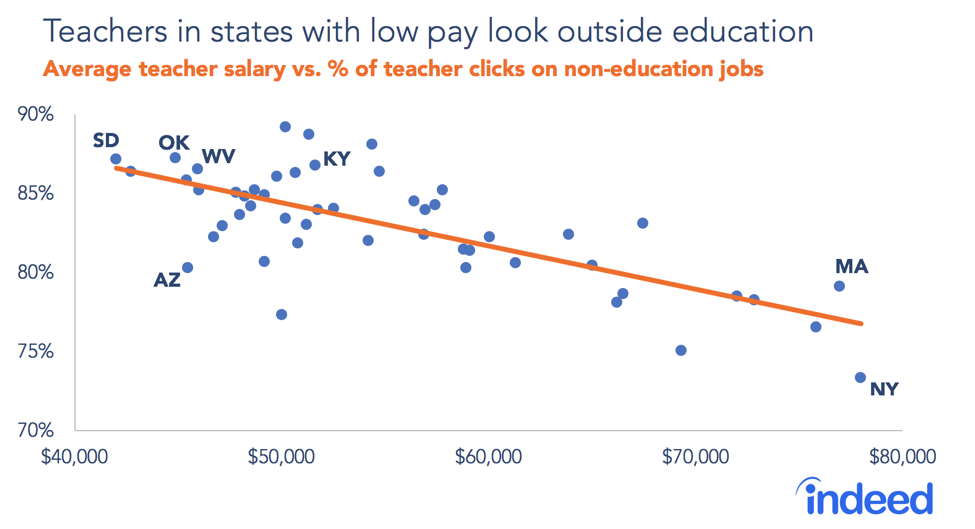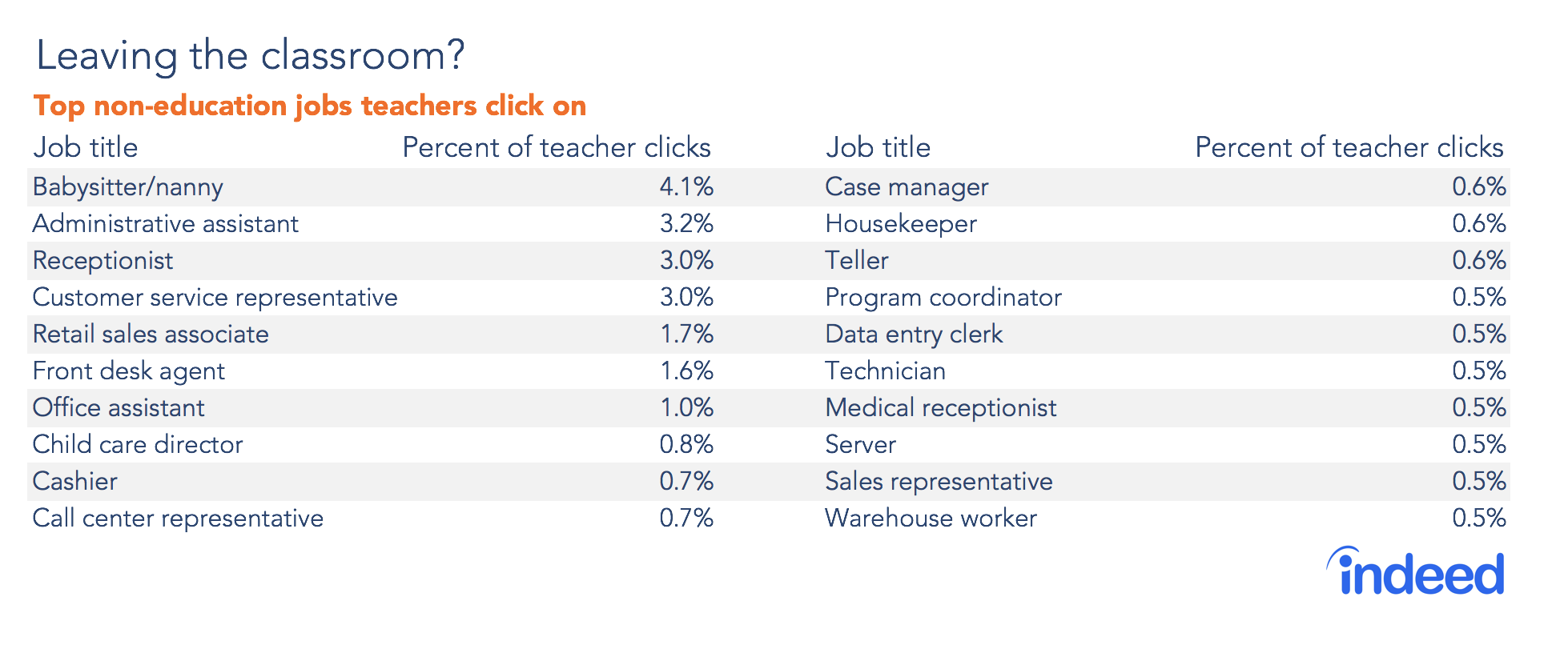Across the country, teachers are striking. It started earlier this year in West Virginia, where teachers won a 5% pay increase from lawmakers after a two-week strike. Then it spread to Oklahoma; after nine days of striking, teachers won a $6,000 raise. Teachers in Kentucky continue to take action in rebellion against pension cuts. And recently educators in Colorado staged a rally and Arizona teachers voted to strike.
In almost every case, teachers have been demanding higher wages. Teachers cite the need to work second jobs or say they must supplement classroom supplies with their out-of-pocket cash. If teachers in states with low-pay are pushed to the breaking point, they could leave the profession altogether.
On Indeed, we see signs of just that. Teachers in states with lower average teacher salaries are more likely to search for jobs outside the education sector than their counterparts in states with higher teacher pay. Take South Dakota, for example. There the average teacher makes $42,025, the lowest figure in the nation. And for South Dakotan teachers who have uploaded a resume on Indeed, over 87% of their clicks are for job postings that fall outside the education sector. By contrast, teachers in New York are paid on average $77,957—the best in the nation—yet their share of Indeed clicks on non-education jobs is just 73%.

The relationship between average teacher salary (as of 2015-16) and the share of clicks on non-education jobs over the past year (through April 1, 2018) was strongly statistically significant. Another possible explanation is that teachers are more likely to look for non-education jobs in states that are seeing the greatest decline in their school-age population; with fewer students to teach, they’re presumably looking for a career switch. However, the relationship between teachers’ clicks on jobs outside of education and the change in the school-age population between 2000 and 2015 was not statistically significant.

So what non-education jobs are teachers clicking on? A smattering of different options, some indicating their desire for part-time work. Babysitter/nanny is at the top, with 4.1% of all teachers’ non-education clicks. That is followed by administrative assistant and receptionist. From customer service representative to office assistant, many of these jobs can be side gigs that provide supplemental income or simple transient work to do during the summer. Or they may indicate that teachers are considering leaving the field altogether.
As the wave of labor unrest among public school teachers potentially spreads, one indication of dissatisfaction with low-pay is the willingness to leave teaching altogether. Pay teachers poorly and don’t expect them to stick around.
Methodology
Average teacher salary (as of 2015-16) and school-age population (as of 2015) statistics come from the National Center for Education Statistics. In filtering Indeed’s data, the job seeker must have uploaded or updated their resume in the three years through April 1, 2018. Their IP address was used to locate the job seeker by state. And to qualify as a teacher, the job seeker’s most recent job title had to be one of the following: teacher, elementary school teacher, special education teacher, high school teacher, school teacher, mathematics teacher, or english teacher. Education jobs are defined by the Bureau of Labor Statistics as “Education, Training, and Library Occupations” (two-digit SOC code: 25); so for the purposes of this analysis, non-education jobs are defined as those falling outside that category.






